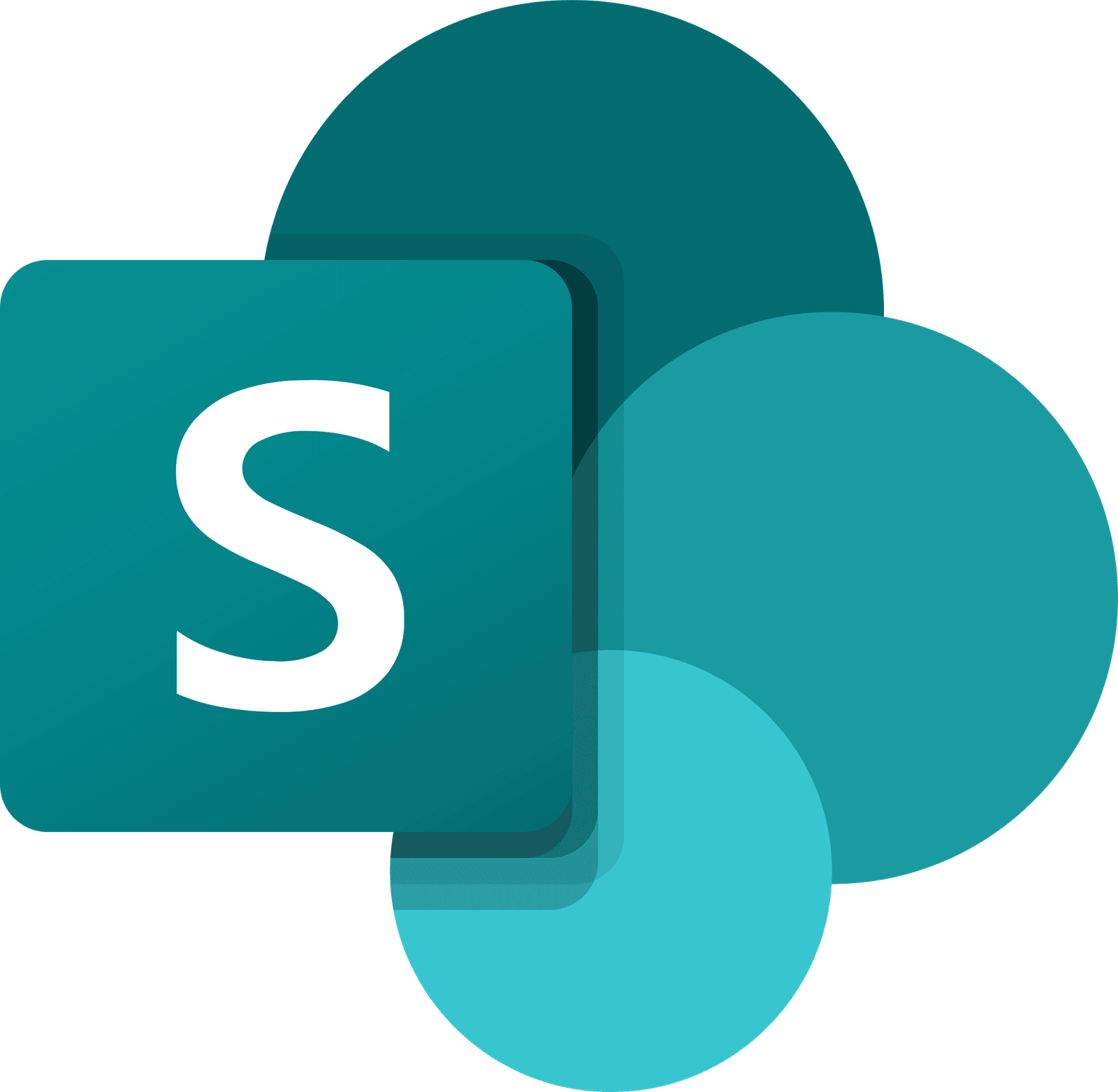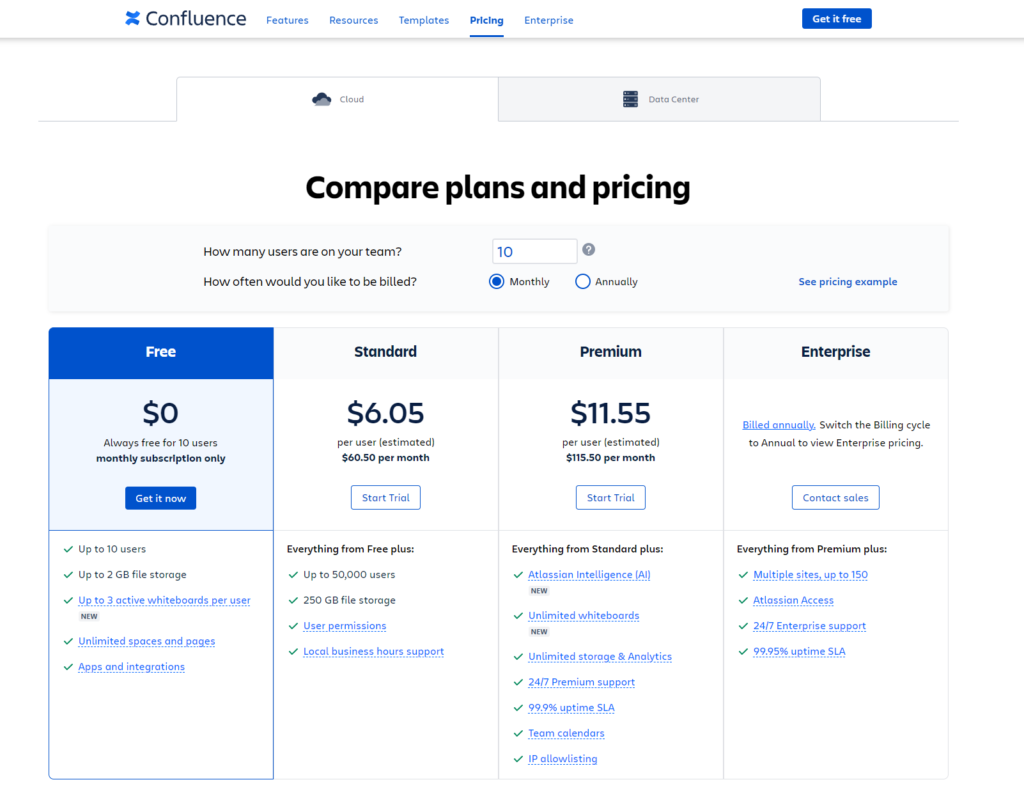Embarking on the journey to find the ideal document management tool for your organization is akin to setting sail in search of new lands. In the vast ocean of options, SharePoint and Confluence stand out as two leading beacons, each guiding the way with its unique strengths and capabilities. SharePoint, a seasoned navigator from the Microsoft armada, offers a robust suite of features designed for comprehensive document management and collaboration within the Microsoft ecosystem. Confluence, a star from the Atlassian constellation, shines with its ability to foster team collaboration and knowledge sharing through its intuitive content creation and organization tools.
SharePoint | Confluence |
|---|---|
| G2 Score – 4 out of 5 stars | G2 Score – 4.1 out of 5 stars |
| TrustRadius Score – 7.9/10 | TrustRadius Score – 8.1/10 |
Integration Capabilities: Navigating the Digital Ecosystem
The ability of a document management tool to seamlessly integrate with your existing digital ecosystem is like having a reliable compass onboard; it’s essential for ensuring that all parts of your ship sail in harmony towards common goals.
SharePoint: The Versatile Explorer
SharePoint stands as a versatile explorer, adept at traversing a wide range of digital terrains thanks to its extensive integration capabilities. As a cornerstone of the Microsoft ecosystem, SharePoint offers seamless integration with a suite of Office applications, including Word, Excel, Outlook, and Teams, making document management and collaboration a natural part of the workflow.
Beyond Microsoft’s shores, SharePoint’s support for various APIs and third-party applications allows it to act as a powerful hub, connecting disparate parts of an organization’s digital landscape. This broad integration landscape enables SharePoint to adapt to the unique needs of any business, supporting a cohesive journey through document management and collaboration.
Confluence: The Agile Schooner
Confluence sails as an agile schooner, focusing on providing streamlined collaboration and content management. While it may not boast the same level of integration with productivity tools as SharePoint, Confluence shines in its ability to integrate within the Atlassian suite, including Jira and Trello, facilitating a seamless flow between project management, issue tracking, and document collaboration.
Additionally, Confluence offers a marketplace filled with add-ons and plugins, enabling organizations to extend its capabilities and connect with a variety of external tools. This focus on enhancing team collaboration and project documentation makes Confluence a valuable ally for teams looking to chart a course through knowledge sharing and project planning.
Collaboration and Content Management: The Ship’s Deck and Compass
The ability to collaborate effectively and manage content efficiently are akin to the deck and compass of a ship, essential for navigating and reaching your destination successfully.
SharePoint: The Sturdy Galleon with Deep Holds
SharePoint, akin to a sturdy galleon, is designed to withstand the heavy demands of large-scale collaboration and complex content management. Its deep integration with the Microsoft ecosystem allows for seamless collaboration on documents, utilizing familiar tools like Word, Excel, and Teams.
SharePoint’s robust content management features, including version control, advanced search, and custom metadata, make it a powerhouse for organizing and retrieving documents. This extensive toolkit, combined with SharePoint’s capacity for intranet and portal creation, equips organizations with the means to create a comprehensive digital workspace that supports intricate document workflows and team collaboration.
Confluence: The Agile Clipper Focused on Team Unity
Confluence, on the other hand, sails as an agile clipper, with a keen focus on bringing teams together to create, share, and manage content in a dynamic and collaborative environment. Its strength lies in its user-friendly interface and structured spaces, which encourage the open exchange of ideas and information.
Confluence’s rich text editor and template gallery streamline content creation, while its inline comments and @mentions enhance team interaction and feedback. Tailored for knowledge sharing and project documentation, Confluence serves as a centralized hub where teams can collaborate on content and maintain an organized repository of project information and decisions.
Customer Support and Community Engagement: The Lifelines of the Digital Voyage
The quality of customer support and the vibrancy of the user community act as lifelines in the vast sea of digital document management, ensuring users can find guidance and camaraderie.
SharePoint: The Established Fleet with a Wide Network
SharePoint benefits from Microsoft’s extensive support infrastructure, offering a wide array of resources, from detailed documentation and online tutorials to a global community of users. SharePoint’s support system includes dedicated customer service, vast online forums, and user groups, as well as professional services for more complex needs.
This established network ensures that SharePoint users can access a wealth of knowledge and support, ranging from simple how-to guides to in-depth technical assistance. The vastness of the SharePoint community also means that users can easily find solutions to common issues and share best practices, contributing to a rich ecosystem of knowledge.
Confluence: The Agile Squadron with a Tight-Knit Community
Confluence, while smaller in scale compared to SharePoint, boasts a highly engaged and supportive user community. Atlassian’s approach to customer support focuses on accessibility and efficiency, providing Confluence users with a comprehensive knowledge base, active community forums, and responsive customer service.
The Confluence user community, though smaller, is known for its willingness to help and share insights, creating a tight-knit network of users who can rely on each other for tips, tricks, and solutions. This sense of community is bolstered by Atlassian’s regular updates and transparent communication, ensuring that users feel supported and valued.

Related: Check out our free SEO suite

User Experience and Ease of Use: The Helm and Charts
A document management system’s UX and ease of use are akin to a ship’s helm and charts, guiding users through their tasks with intuitiveness and efficiency, ensuring a productive voyage.
SharePoint: The Complex Navigator
SharePoint, with its vast array of features and capabilities, can sometimes feel like navigating a complex galleon. Its strength lies in its powerful functionality and deep integration with the Microsoft ecosystem, but this comes with a learning curve. The platform’s customization options, while a significant advantage, can also add layers of complexity to the user experience.
Organizations often find that maximizing SharePoint’s potential requires dedicated training and possibly onboarding assistance to help users fully leverage the platform’s capabilities. However, for those well-versed in Microsoft products, SharePoint provides a familiar environment, and the recent enhancements to its interface have made navigation more user-friendly.
Confluence: The User-friendly Schooner
In contrast, Confluence sets sail as a user-friendly schooner, designed for smooth and straightforward navigation. Its interface is clean and intuitive, emphasizing content creation and collaboration without overwhelming users with excessive features.
Confluence’s structured yet flexible approach to organizing pages and spaces makes it easy for users to find and manage their work, encouraging a more collaborative and engaged team environment. The platform’s emphasis on simplicity and usability makes it a favorite among teams that value quick onboarding and the ability to start creating and sharing content with minimal training.
Security and Compliance: The Ship’s Cannons and Maps
The security features and compliance capabilities of a document management system are akin to a ship’s cannons and navigational maps, essential for protecting the vessel and ensuring a lawful voyage.
SharePoint: The Armored Frigate
SharePoint, fortified by Microsoft’s extensive security infrastructure, serves as an armored frigate in the realm of document management. It boasts a comprehensive suite of security features, including data loss prevention, advanced threat protection, and secure access controls. SharePoint’s compliance offerings are broad, covering a wide range of global and industry-specific regulations.
This is facilitated by Microsoft’s commitment to compliance and security, with continuous updates that respond to new regulations and cybersecurity threats. For organizations navigating the complex waters of data protection laws and seeking a high level of security, SharePoint provides a fortified solution.
Confluence: The Agile Privateer
Confluence, while perhaps more of an agile privateer compared to SharePoint’s armored frigate, still offers solid security features tailored to its environment. It provides encryption in transit and at rest, along with detailed permission settings and audit logs to track content changes and access.
While Confluence may not boast as extensive a compliance certifications list as SharePoint, it focuses on ensuring that teams can collaborate securely within a controlled environment. For businesses that prioritize ease of use along with a secure framework for collaboration and content management, Confluence offers a balanced approach.
Pricing and Subscription Models: Navigating the Financial Seas
The pricing structure and subscription models of a document management system are akin to the provisions and trade routes that sustain a voyage, essential for maintaining operations over the long term.
SharePoint: The Versatile Armada
SharePoint, with its position within the broader Microsoft ecosystem, offers a variety of pricing tiers through Office 365 and Microsoft 365 subscriptions. This model provides flexibility, allowing organizations to choose a package that aligns with their size and needs—from basic document management functionalities to more advanced collaboration and security features.
However, it’s important for potential SharePoint users to consider the additional costs that may arise from customization, integration, and training to fully leverage the platform’s capabilities. For larger enterprises or organizations deeply integrated with Microsoft products, SharePoint’s pricing model can offer significant value, particularly when utilized across multiple departments and projects.
Confluence: The Streamlined Brig
Confluence offers a transparent and straightforward pricing model, designed to cater to teams of all sizes with a focus on collaboration and content management. With its tiered subscription plans, Confluence provides clarity on what each level offers, making it easier for organizations to predict costs and scale as necessary.
The pricing includes access to core features like page creation, space management, and team collaboration tools, with additional costs for premium features or increased capacity. This model is particularly appealing for small to medium-sized businesses or teams within larger organizations that require a focused solution for knowledge sharing and project documentation without the complexity of a larger platform.
Pricing
SharePoint:

Confluence:

Conclusion
Each platform, like a distinct vessel designed for specific voyages, offers unique strengths and capabilities tailored to different organizational needs.
SharePoint stands as a comprehensive, feature-rich platform that excels in integration within the Microsoft ecosystem, making it a formidable choice for enterprises or businesses deeply embedded in Microsoft products. Its robustness in collaboration, document management, and scalability, coupled with Microsoft’s extensive support network, makes SharePoint a versatile tool for organizations seeking a deeply integrated document management solution.
Confluence, on the other hand, sails with agility and focus, prioritizing ease of use, efficient collaboration, and content management within a more streamlined interface. It shines in fostering team collaboration and knowledge sharing, supported by a responsive customer support system and an engaged community. Confluence is particularly well-suited for agile teams and organizations that value simplicity, user-friendliness, and a tight-knit user community.
Read Next:
- GetResponse vs Zoho Campaigns: The Best Email Marketing Tool for 2024
- AWeber vs ActiveCampaign: The Best Email Marketing Tool
- Constant Contact vs Campaigner: Best Email Marketing Tool
- GetResponse vs Omnisend: The Best Email Marketing Tool for 2024
- AWeber vs Benchmark Email: The Best Email Marketing Tool






















Comments are closed.